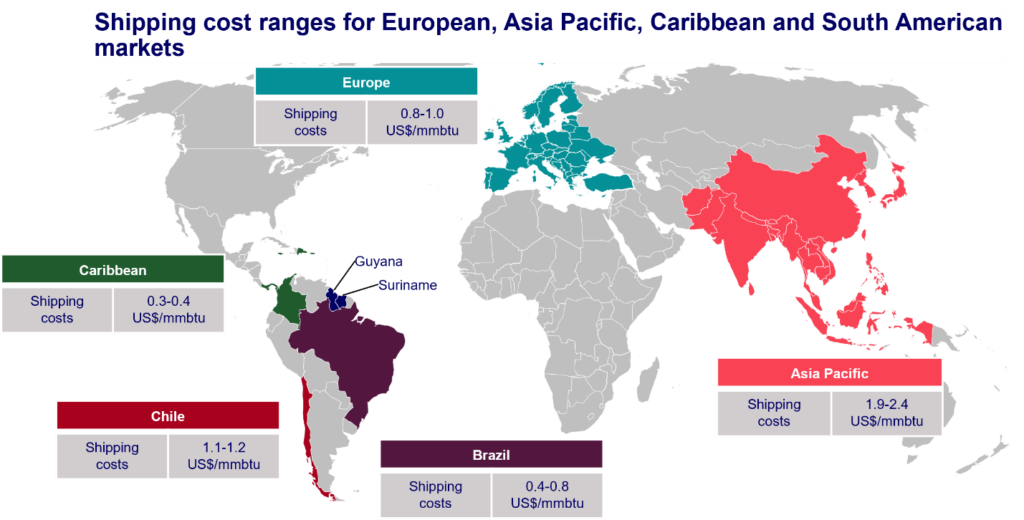By Kiana Wilburg
CEO, Guyana Energy Conference and Supply Chain Expo
Guyana and Suriname have the potential to become major LNG producers of the Caribbean as their combined resources could support up to 12 million metric tonnes per annum (mmpta) by the next decade. This perspective was recently offered by Wood Mackenzie, a leading global provider of data and analytics solutions for the renewables, energy, and natural resources sectors.
Expounding on this potential in its recent report, Wood Mac analysts said Guyana’s Haimara cluster and Suriname’s Block 52 (Sloanea) are estimated to hold 13 trillion cubic feet (tcf) of discovered non-associated gas. These reserves it said could deliver LNG supply at a breakeven, excluding shipping and regasification costs, of about US$6/mmbtu.
Those positive economic results, Wood Mac said, bode well when placed alongside other factors such as high well productivity and the fact that both nations are engaging major upstream partners that are experienced in LNG commercialisation.
Another key point raised by Wood Mac is that the Guyana-Suriname potential comes at a time when the global market still needs 105 mmtpa of pre-Final Investment Decision (pre-FID) LNG to fill the supply/demand gap by 2035.

Amanda Bandeira, a research analyst on Latin America Upstream Oil and Gas for Wood Mackenzie, was keen to note that other key market decisions could help create the right environment that allows a Guyana-Suriname partnership on LNG to thrive.
She said, “…US and Qatar LNG dominance is rapidly growing, but there is a supply window in the mid-2030s, coming in part from the US President, Joe Biden’s pause on approving new US LNG export projects.
“In this environment, Guyana and Suriname can offer a new cost-competitive LNG supply source and serve as regional suppliers, holding shipping costs advantage to address Caribbean and South American demand. They are also on par with US Gulf and West Africa projects to deliver to the main demand centres in Southeast Asia.”
While it is still unclear what fiscal terms Guyana and Suriname will outline for their respective non-associated gas developments, Wood Mac noted that the potential for joint development between the two nations is indeed significant and therefore worth considering.

